We have seen in an earlier article how the Swastika symbol was derived from the representation of the sun. The sun representation in our prehistory also took another path to arrive at a different final configuration. This configuration took a slightly different form to accommodate the sun representation on the rectangular space available on a human forehead. The various stages of these configuration changes of our sun are shown in the following diagram. The final configuration is also used all over India today.

The Progressive Stages of the Development of the Sun Sign
The ultimate configuration is now regularly used by the Sanatan Holy men on their forehead and arms. It is also used on doors and walls of houses and temples as an auspicious symbol. The true meaning of this enigmatic symbol was lost for most of us until now, mainly due to natural and manmade calamities suffered by our ancient culture after the river Saraswati dried out from the hub of our cultural area. We now know that the configuration represents our sun.
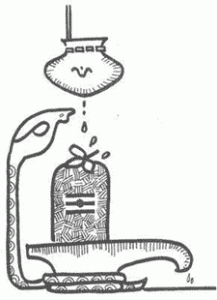
Sketch of a Shivalinga
However, its surprised continuous use on the Shivalinga in all the temples in India (Bharat) has led me to the new and original meaning associated with the whole configuration of the Shivalinga as shown in the figure below.
Note the sun symbol on the Shivalinga. That symbolic representation of sun is always associated with the Shivalinga and this enigmatic configuration of the Shivalinga is the subject of the next article.
The three lines and the dot on the middle line (to represent the sun) went through further modifications over time. Fortunately, all the stages through which modifications have occurred are being used in our culture and hence it is easy to see them today.
The picture here shows a Sadhu with the standard version of the sun sign shown on his forehead. It still remains the most widely used symbol to indicate the sun on a human forehead apart from the Chanllo (Tilak, Bindi, Bindiya, etc.)
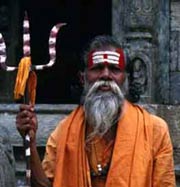
Chandlo Variation 1
As time passed, some variations of the standard sun sign started to appear. One of the variations was to show the dot for the sun on the lower line instead of the middle line. These lines, as we have seen earlier, represent the sun’s rays. A picture of a Shadhu with the sun dot shown on the lower line is shown here.
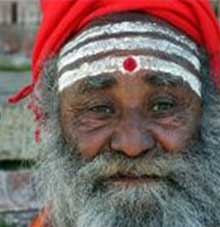
Chandlo Variation 2
The third stage of the modifications was to show the sun dot separately from the lines, this displays the sun’s rays. A Shadhu, showing the lines of rays separately from the sun dot, is shown here.
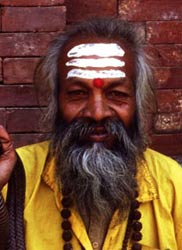
Chandlo Variation 3
The forth and the final modification was to eliminate the lines indicating the sun rays altogether from the sun representation leaving the dot alone on the forehead. A picture with that modification of the sun sign is shown here. This is then how the Chanllo (Tilak, Bindi, Bindiya, etc.) evolved in our Sanatan culture from the sign to represent the sun. The Chanllo of red colour on the forehead shows that the sun is the Supreme Lord and master of this world and it is present to witness whatever activities we are conducting.
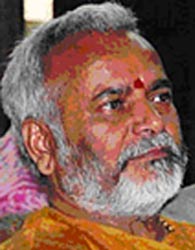
Chandlo Variation 4
A round Chanllo of red colour placed on the forehead of any married women of the Sanatan culture shows that she has a master (husband). However, it has now become an ornament to wear in any shape and colour by females of all ages and all cultures (young, old, married widowed and unmarried). A picture showing the Chanllo on the forehead of a female is shown here. It will not be an unusual sight to see a woman wearing it in London, Los Angeles or New York.
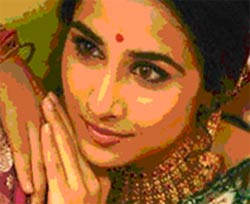
Modern Usage of the Chandlo
Thus the Chanllo represents our sun the Lord of every living being. These modifications of the sun sign into the Chanllo discussed here are shown below in a sequence.

The Progressive Stages of the Development of the Chandlo from the Sun Sign
It is interesting to note that the various stages of the sun representations are still used by the holy men of Sanatan culture throughout the world. However, in spite of thousands of years of modifications, the progressive stages are easily discernable today.
We now realise the true meaning of the enigmatic signs of the Chanllo. It simply represents the Sun, the Supreme Lord of our world. Is that realisation not wonderful?

